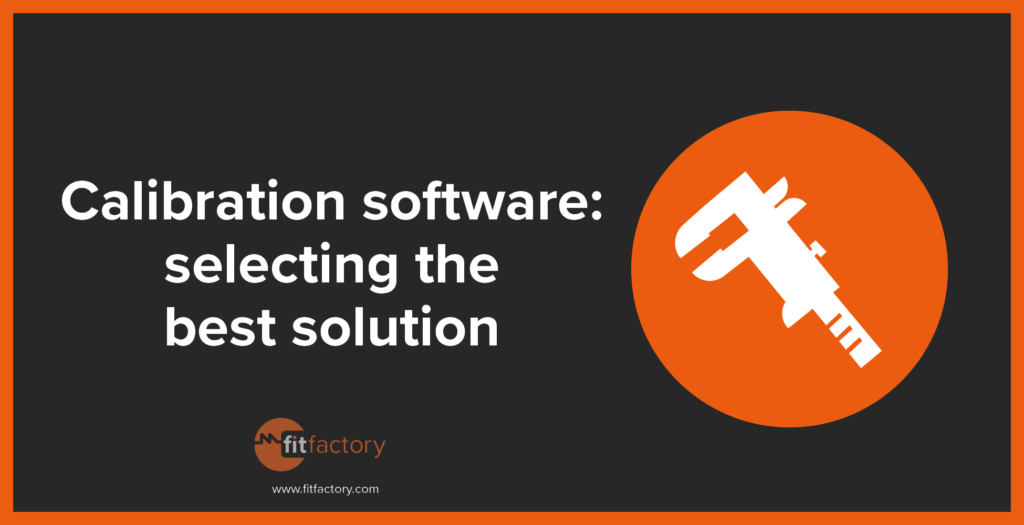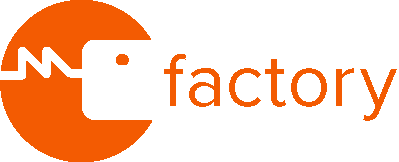
Ensuring your assets are effectively calibrated can be the difference between producing consistent products, and completely missing the customer specification. Therefore, it goes without saying that companies spend thousands of pounds every year to ensure their assets are performing optimally. So much so, that the calibration equipment itself can require monitoring. This is where calibration software comes in.
Unfortunately, what may seem like an easy solution at first has a couple of options. To start, let’s break down the different types available and what they’re used for:
- Calibration management software helps you manage the measuring equipment you use to calibrate your assets.
- Calibration laboratory management software is for subcontract calibrators to simplify order processing and job control in their calibration laboratories.
- Measuring equipment manufacturer software is used to confirm fitness for use and provide traceability for equipment leaving a manufacturer’s premises.
- Calibration software directly captures and inputs the calibration results. Usually, this is used in conjunction with, or as part of, the first three types of software.
Calibration management software
Firstly, Calibration management software helps you manage the measuring equipment that you use to calibrate your assets. It’s really useful if you perform calibrations in house and have a lot of tools to manage.
While it’s important to ensure your assets are in check, it’s equally important to ensure that the tools you use to calibrate those assets are working effectively too.
Imagine you’re part of a pit crew in Formula 1. Each pit stop needs to be as quick as possible. Because of the competition, even taking a fraction of a second too long to change tyres can give your opponent an advantage. So it’s crucial that you have all of the tools to hand precisely when you need them.
But, if you have no way of tracking where those tools are, they can easily go missing. People might accidentally take them home. Or worse, those assets could be overworked and not monitored so one day you go to use it, but it can’t screw the bolt in fully anymore, so the tyre is a little loose around the track causing greater issues to your driver.
Your business may not work in high-performance sport, but every minute counts for your team. If your team is looking for a tool that isn’t there, or is using a tool that is making the incorrect measurements, they are not being as productive as possible. Which is important to your business.
Calibration laboratory management software
Secondly, we look at Calibration laboratory management software. Basically, it’s for specialist calibration subcontractors to use to manage their business from order processing, through to calibration tracking and delivery of work. Like a production control system for companies specialising in calibrations.
Generally, if you are manufacturing goods and subcontracting out your calibration work, there’s a good chance that you have some really big pieces of equipment that are too complex to do in house. Alternatively, you might have just decided that it’s not something you want to do yourself, which is also fine.
If you do subcontract out, this is what your subcontractor will use. It should produce their quotes, invoices, works orders and provide live status of where jobs are up to, as well as report progress when jobs are complete.
Measuring equipment manufacturer software
The Measuring Equipment tests that tools are calibrated effectively and produces certification to prove it. While this is available standalone as an add-on to and ERP system, it may also be part of Calibration software.
It will read results from digital tools, or have them uploaded by spreadsheets. Then, it will check those results are within a tolerance, pre-defined by the manufacturer. Based on this information, you will either produce a certificate or conformity, or have to adjust the settings. A clever bit of software here will tell you how to adjust the settings to bring it within tolerance too.
Finally, each of these sets of results will be recorded with full traceability for your records.
Calibration software
Finally, Calibration software sits alongside any of the previous tools we’ve mentioned. And it is used to perform and capture the results of any calibrations. Generally, we would expect this to come as a standard part of any of the above mentioned systems.
However, if you are not required to produce calibration records as part of your quality compliance, you may use standalone calibration software to capture results to check that assets are working effectively, without needing the additional functionality to record a history of every use, and produce certification following re-calibration of tools.
Which one is right for you?
Each of these different software types has its place. But it’s entirely dependent on your role and what your company does.
Calibration software is usually incredibly important. However, if you don’t need to show calibration records as part of your compliance procedures, then this will be less relevant. If all calibration is subcontracted and subject to certification, or if individual calibration measurements are of no interest to the owners and users of the measuring equipment, then you would not need it. However, if you are required to retain results, but they’re provided by a third party, you will likely need a quality management system with some calibration or tooling management capabilities.
On the other hand, calibration measurements and error values are of direct interest to the user who wishes to use error or wear trends to assess the condition of measuring equipment and make decisions concerning its value, reliability and usefulness.
Of course, if calibrations are done in-house, you might need calibration management software to manage the asset database, but also calibration software to capture the readings of calibrations. Furthermore, if you use a combination of in-house calibrations and external calibration laboratories, you may need your calibration management software to link with calibration laboratories. In this case, the calibration management software becomes invaluable as the central hub where it combines internal and external calibration records, and provides an overview of the entire calibration and asset management area of business.
Digital calibration management
Additionally, as the industry more readily adopts digital technology, your calibration capabilities will need to follow. However, simply performing the function of each of these tools in not really enough anymore. There is a need for greater integration of systems across the business, but also across the supply chain.
Check out this article for more details on how digital calibration management improves productivity.Fitfactory’s Calibrate software showing asset tracking and traceability
So, any system you purchase should incorporate elements of each of the above software. It should capture results directly from the tool, maintain them in a database which checks the results are within tolerance, and track the location of any tool or asset (even if that asset goes to a supplier). Then, this will provide all of your information in one system and maintain full traceability and locations of tools. This ultimately can save thousands of pounds in lost assets if you have a large operation.
A cloud-based system would make this easier still by allowing the use of mobile devices to capture results by shop-floor operatives, share status in real-time with the quality team, and raise issues as they occur.
It is this area that Fitfactory excels in. Having acquired retriever technology in 2016, we combine 30 years experience of delivering calibration software, with the latest technology innovation.
Our cloud-based calibration management software maintains a full asset database, with location, status and full history of certification and results. By tracking who did what and when, with usage logs, it automatically provides full traceability to simplify quality management.
For more information about how we can help you improve calibration management, get in touch for your free consultation.
